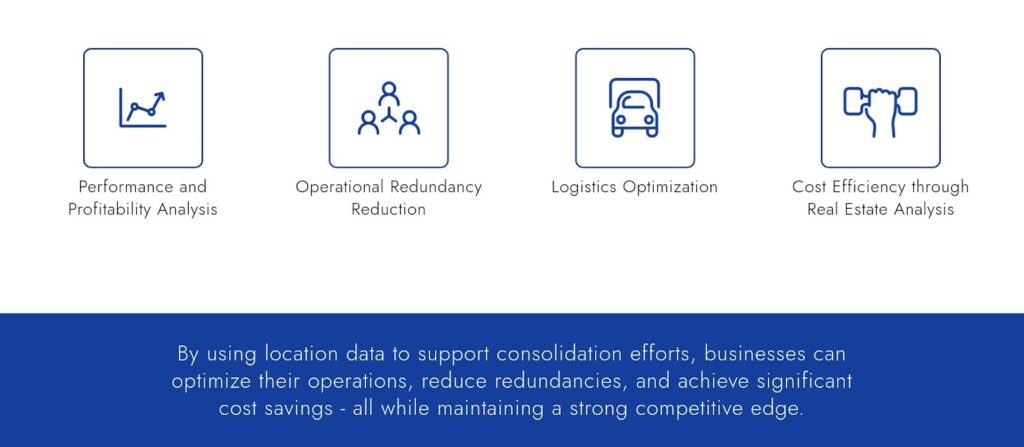In an increasingly globalized world, businesses face both incredible opportunities and substantial challenges as they look to expand or consolidate their operations internationally. One of the most critical elements in successful international business decisions is the development of effective global location strategies. These strategies not only provide a roadmap for expansion but also allow companies to maximize operational efficiencies through consolidation. By leverage location data, businesses can identify optimal sites, understand market demand, and drive strategic decision-making with confidence.
This article will explore the foundations of global location strategies, the essential components involved, and how data-driven insights are instrumental in guiding business expansion and consolidation efforts. Through real-world case studies, we will showcase best practices, providing actionable insights for corporate HR departments and strategic decision-makers aiming to fine-tune their location strategies.
What is a Global Location Strategy?
Global location strategies are comprehensive plans that guide where a company establishes, expands, or consolidates its operations on an international scale. They account for a variety of factors, including economic conditions, political stability, labor markets, logistical requirements, and regulatory landscapes. Effective location strategies align with a company’s broader business goals and enhance its competitive advantage.
What Makes a Global Location Strategy Successful?
- Market Analysis: Identifying and evaluating potential markets where the company can thrive.
- Competitive Landscape Assessment: Understanding the competitive dynamics within target regions to capitalize on strategic advantages.
- Cost-Benefit Analysis: Evaluating costs, from real estate to labor, and balancing these with anticipated revenue.
- Labor Market Analysis: Analyzing local talent availability, skill levels, and labor costs.
- Infrastructure and Logistics: Assessing the local infrastructure and ease of access to resources and transportation.
- Regulatory and Political Environment: Considering regulatory requirements, tax incentives, and political stability.
- Quality of Life Factors: Especially relevant for locations that will host key personnel or HR hubs, where lifestyle and employee satisfaction play crucial roles.
Why Data-Driven Insights Are Essential for Location Strategy?
The traditional approach to selecting business locations often relied on intuition, past experience, or limited market research. However, leverage location data to enhance decision-making has transformed global location strategies, enabling companies to make data-backed, precise decisions.
Data-driven insights bring a level of accuracy and depth that enhances location strategies in several ways:
- Identifying Market Demand: Analyzing consumer behavior data, demographic insights, and purchasing patterns to pinpoint emerging markets or underserved regions.
- Competitor Analysis: Tracking competitor locations and performance can inform a company’s decision to enter or avoid specific markets.
- Risk Mitigation: Data-driven assessments of political, economic, and environmental risks enable businesses to proactively identify and manage potential threats to their expansion.
- Labor Availability and Cost Analysis: Real-time data on labor supply and demand in various regions helps businesses identify ideal markets for recruiting skilled workers.
- Optimizing Operational Efficiency: Using location data to identify cost-saving opportunities for consolidation, reducing redundancy, and enhancing logistical efficiency.
How Location Data Powers Smart Expansion Decisions?
A successful business location strategy relies heavily on data that provides visibility into untapped or high-potential markets. By leverage location data, companies can identify areas with favorable demographics, strong consumer demand, and supportive business environments. Here are key ways data informs business expansion:
- Market Potential and Consumer Demand Analysis
By analyzing purchasing trends, disposable income levels, and demographic shifts, companies can estimate the potential demand in various markets. Data can reveal emerging markets that match the company’s product offerings or services.
- Site Selection and Real Estate Insights
Location data enables businesses to evaluate real estate prices, lease options, and proximity to critical resources, ensuring that the chosen site aligns with financial goals and operational needs.
- Labor Market Insights for Expansion
Data on local talent pools, educational institutions, and workforce dynamics helps companies expand where they can attract the right talent efficiently. This is particularly important for tech and skilled-labor industries.
- Economic and Political Stability
Political and economic data allows businesses to evaluate the stability of potential markets. Key metrics might include inflation rates, GDP growth, political climate, and the ease of doing business.
Case Study: Starbucks’ Data-Driven Expansion Strategy
Starbucks serves as a notable example of a company leverage location data for its global expansion. With the help of data analytics, Starbucks evaluates potential locations by analyzing demographics, foot traffic, income levels, and competitive landscape. This approach allows Starbucks to optimize its location selection, entering high-potential markets while avoiding oversaturated areas. Their data-driven location strategy has contributed to consistent global growth and brand strength.
How Location Data Drives Smart Business Consolidation?
While expansion is often top-of-mind, global location strategies also play a vital role in consolidation—streamlining and optimizing existing locations to reduce costs and improve operational efficiency. Data-driven consolidation involves using location intelligence to evaluate underperforming sites and identify opportunities for merging operations without compromising service quality.

Here’s how data supports consolidation:
- Performance and Profitability Analysis
Using financial and operational data, companies can identify underperforming locations, enabling informed decisions about which sites to close or merge.
- Operational Redundancy Reduction
Location data helps companies identify operational redundancies, such as overlapping service areas. Consolidation can lead to resource savings and more focused business efforts.
- Logistics Optimization
By analyzing transportation, inventory, and distribution data, companies can streamline supply chains and improve logistics through strategic consolidation.
- Cost Efficiency through Real Estate Analysis
Real estate costs vary widely across locations, and by analyzing rental prices, taxes, and lease terms, companies can make decisions that lead to substantial cost savings.
Case Study: Walmart’s Consolidation Strategy in the U.S.
Walmart has successfully used data-driven insights for consolidation within its U.S. operations. By analyzing store performance, traffic patterns, and regional demand, Walmart identified locations that could be consolidated to reduce redundancy and enhance efficiency. The company’s use of data to close or merge stores not only reduced costs but also allowed Walmart to focus more resources on high-performing locations.
Top Tips for Crafting a Successful Global Location Strategy
- Integrate Data at Every Step
Ensure that location data guides each phase of the strategy, from market research to site selection, performance monitoring, and consolidation planning.
- Use Predictive Analytics
Leverage predictive analytics to assess future trends in customer demand, labor markets, and economic stability, preparing for long-term success.
- Align Location Strategy with Business Goals
The business location strategy should align with broader organizational objectives, supporting profitability, growth, and employee satisfaction.
- Engage Cross-Functional Teams
Cross-functional collaboration between HR, finance, operations, and real estate is crucial in crafting a holistic strategy. HR, for instance, can ensure that expansion plans align with talent acquisition goals.
- Monitor and Adapt
Continuously monitor location performance through real-time data to adjust strategies as needed. Markets evolve rapidly, and flexibility can help businesses maintain competitiveness.
Conclusion:
In today’s dynamic market, global location strategies are more than a roadmap—they are essential to a company’s sustainable success and growth. By leverage location data, businesses can identify prime markets for expansion, streamline operations through consolidation, and make decisions grounded in real-time insights.
Location strategy involves more than just picking spots on a map; it is a sophisticated, data-driven process that considers a multitude of factors, from consumer behavior to economic trends. For corporate HR departments and business leaders, a well-crafted global location strategy will empower them to drive efficient and profitable international operations, adapting swiftly to the evolving needs of global markets.
By following these principles, companies can position themselves for success on the global stage. Whether expanding to new territories or consolidating to improve efficiency, businesses that leverage location data will stay competitive, meet demand effectively, and drive long-term growth.
To further support your global location strategy with comprehensive job market data and insights, Sign up on Jobspikr, helping you make data-driven decisions for expansion and consolidation success.



